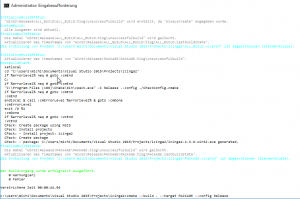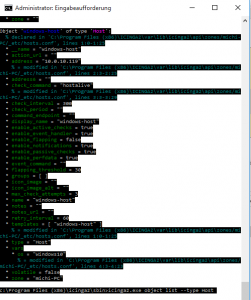Follow-up from the recent blog post on developing Icinga 2 on Windows:
Now that we’ve learned how to compile and develop Icinga 2 on Windows, it’s all about running it and also creating a setup package for installation.
Build Release Package
CMake uses CPack and NSIS to create the setup executable including all binaries and libraries in addition to setup dialogues and configuration. Therefore we’ll need to install NSIS first.
Once completed navigate to your Visual Studio project and tell CMake to build a release package.
cd "c:\Users\michi\Documents\Visual Studio 2015\Projects\icinga2" cmake --build . --target PACKAGE --config Release
Note: This will still use the debug builds from the previous Visual Studio integration guide. A yet more clean approach is to run CMake with changed release parameters beforehand and then re-run the release package builder.
cd "c:\Users\michi\Documents\Visual Studio 2015\Projects\icinga2" cmake . -DBOOST_ROOT=C:\boost_1_60_0 -DBISON_EXECUTABLE=C:\ProgramData\chocolatey\lib\winflexbison\tools\win_bison.exe -DFLEX_EXECUTABLE=C:\ProgramData\chocolatey\lib\winflexbison\tools\win_flex.exe -DICINGA2_WITH_MYSQL=OFF -DICINGA2_WITH_PGSQL=OFF -DICINGA2_UNITY_BUILD=ON cmake --build . --target PACKAGE --config Release
The CMake instructions are defined inside the main icinga2 git repository in CMakeLists.txt (look for variables with prefix CPACK_).
Run Icinga 2
While you can run the icinga2 daemon in foreground, you should be well aware that the default mechanism is to install a Windows service and let it handle the start, stop and reload actions for Icinga 2.
Apart from that you may just use the icinga2 cli commands known from the documentation, such as „icinga2.exe daemon -C“ for validating the configuration on your Windows client.
Another example: „object list“


 4 – 8 November offered new ideas for build systems, backups and smartphone syncing, as well as a Puppet Camp and webinar on the side.
4 – 8 November offered new ideas for build systems, backups and smartphone syncing, as well as a Puppet Camp and webinar on the side.















